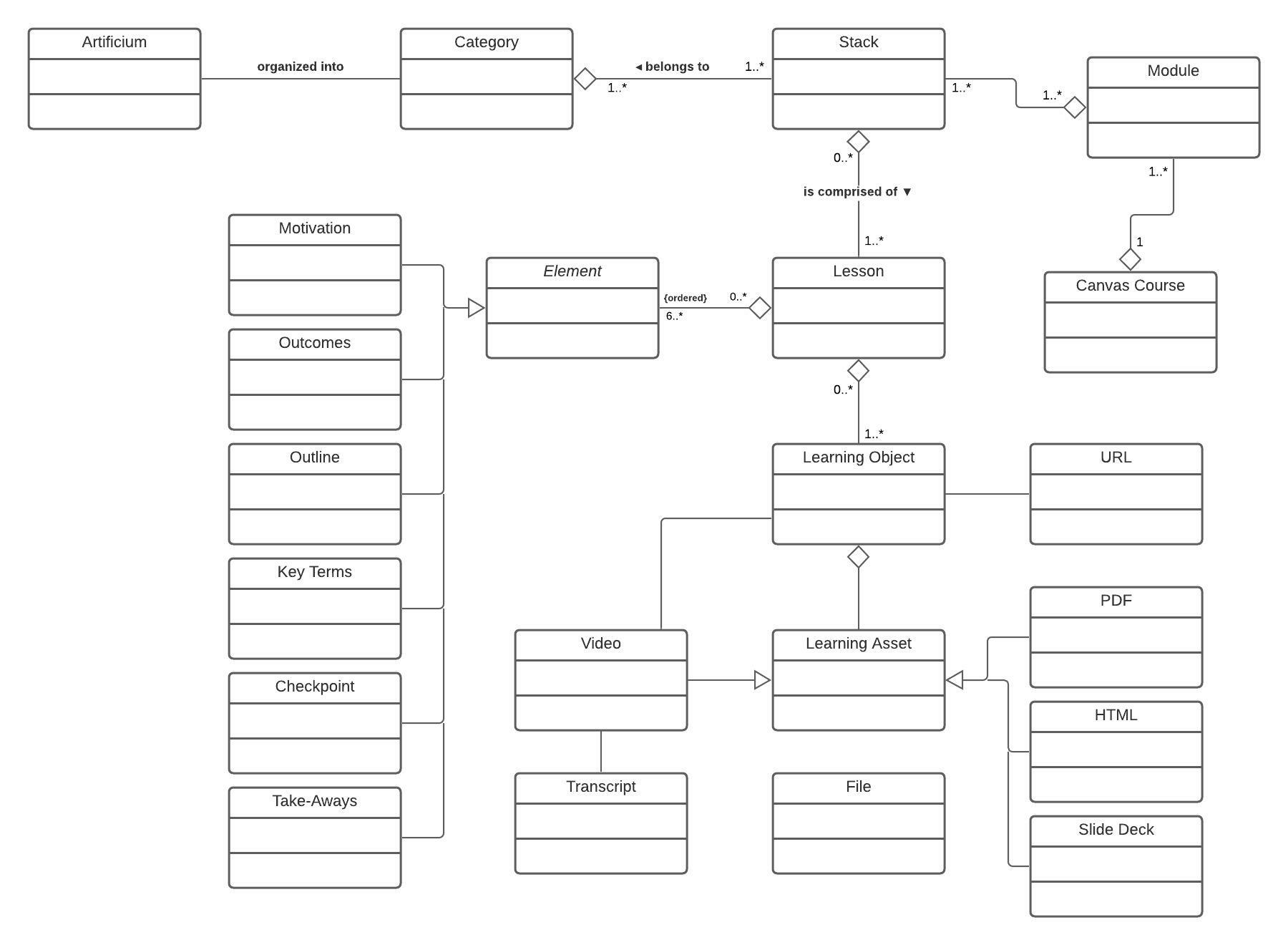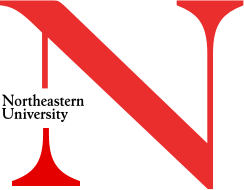About :artificium
:artificium is a repository of reusable learning assets that are organized into chunks that can be embedded within courses or course units.
Genesis
The :artificium repository was created and is maintained by Martin Schedlbauer. Dr. Schedlbauer is a Teaching Professor in the Khoury College of Computer Science at Northeastern University in Boston where it supports his teaching.
Martin’s teaching focuses on information science, machine learning, data management, business analysis, and software development. Dr. Schedlbauer pursues research interests at the intersection of learning science and education.
Design Approach
:artificium is a collection of lessons organized into stacks. Lessons consist of learning elements and learning objects. Learning objects are intended to impart knowledge and skills and are used by learners in learning episodes such as courses. Learning objects are made up of learning assets. A learning asset (or, simply, asset) can be a document, case study, worked example, tutorial, slide deck, media in the form of narrations of a slide deck or videos (screen casts, recordings, talking head), demonstration, discussion, lecture, external URL, section of a text book, etc. For example, a learning object on loading a CSV file into R might have several learning assets: a video code walk, video transcript, and code sample files. Most learning objects are wrappers around learning assets. For example, a video (a learning asset) might be stored on Vimeo and be embedded in a learning object with some explanatory text summarizing the key points of the video, introducing the author or narrator, and providing links to downloadable or viewable sample code, required files, slide deck, or other learning assets. Learning objects are part of one or more lessons. Additionally, each lesson contains one each of these supporting learning elements: Motivation, Outline, Key Terms, Checkpoint, and Take-Away. While, lessons may contain multiple learning objects they must contain at least one. Learning objects and learning elements are generically referred to as learning blocks. Lessons are rolled up into learning stacks (or, simply, stacks). Stacks are bundles or packages of related lessons that are useful to a learner. Stacks are organized in categories that describe particular subject areas. For example, some of :artificium’s categories include XML, SQL, and Machine Learning. A stack can belong to more than one category. Learners generally start with a stack but might later return to a bookmarked lesson or a specific learning object for review.
Stacks, lessons and learning assets are designed to be transportable. That means that they are free of any reference to pre-requisites or co-requisites, they are consumable non-sequentially (no presumed sequence), free of transitions, and self-contained. However, learning objects within a lesson are sequential and designed to be consumed sequentially by learners in order to be effective. In the context of :artificium, all learning assets are digital learning assets, although in a classroom environment, teachers may augment their instruction with non-digital learning assets.
Courses can be designed in various ways. Some instructors might choose to organize a course temporally where each “unit” represents some time period such as a week. During each unit a set of learning stacks are covered. Units might be referred to as “Modules” in some Learning Management Systems, such as Canvas, for example. So, in Canvas, an instructor might take a typical semester-long course of 15 weeks and create 15 modules. Each module then contains several learning stacks chosen from :artificium. Within each stack there are lessons. Each lesson consists of learning objects and other learning elements and each learning object is comprised of one or more learning assets coupled with optional teaching assets.
Teaching assets are meant to be used by instructors to aid in how to best use a learning object. They can take the form of instructor notes, teaching guides, timing charts, and pedagogical material.
The actual teaching and learning assets are generally external to :artificium. For example, many slide decks are created in PowerPoint and are provided as links to OneDrive. Most code and data files are links to repos on GitHub while videos are generally hosted on Youtube, Panopto, or Vimeo. Documents are generally HTML or PDF and hosted on GitHub. Books are generally written in Markdown on hosted on either GitHub or bookdown.org.
To encourage embedding and reuse across courses and organizations, lessons are navigation and context-free. They do not have a navigation bar or footer, not any kind of branding other than information about the creators of the lessons so that proper attribution can be made. The same is true for individual learning objects and learning assets. Course creators can utilize entire stacks but should rarely include a stack in a course. Instead they should include (either via linking or embedding) lessons, although individual learning assets can be reused as well and embedded in new lessons. Stacks, on the other hand, do have navigation bars and footers. The same is true for entire courses. It is important to note that this also allows the same lessons to be used across courses and to be referenced in the same course at multiple times encouraging interleaving and repetition.
Ontology

:artificium Ontology
References & Resources
:artificium created by Martin Schedlbauer · Khoury College of Computer Sciences ·
 :artificium
:artificium